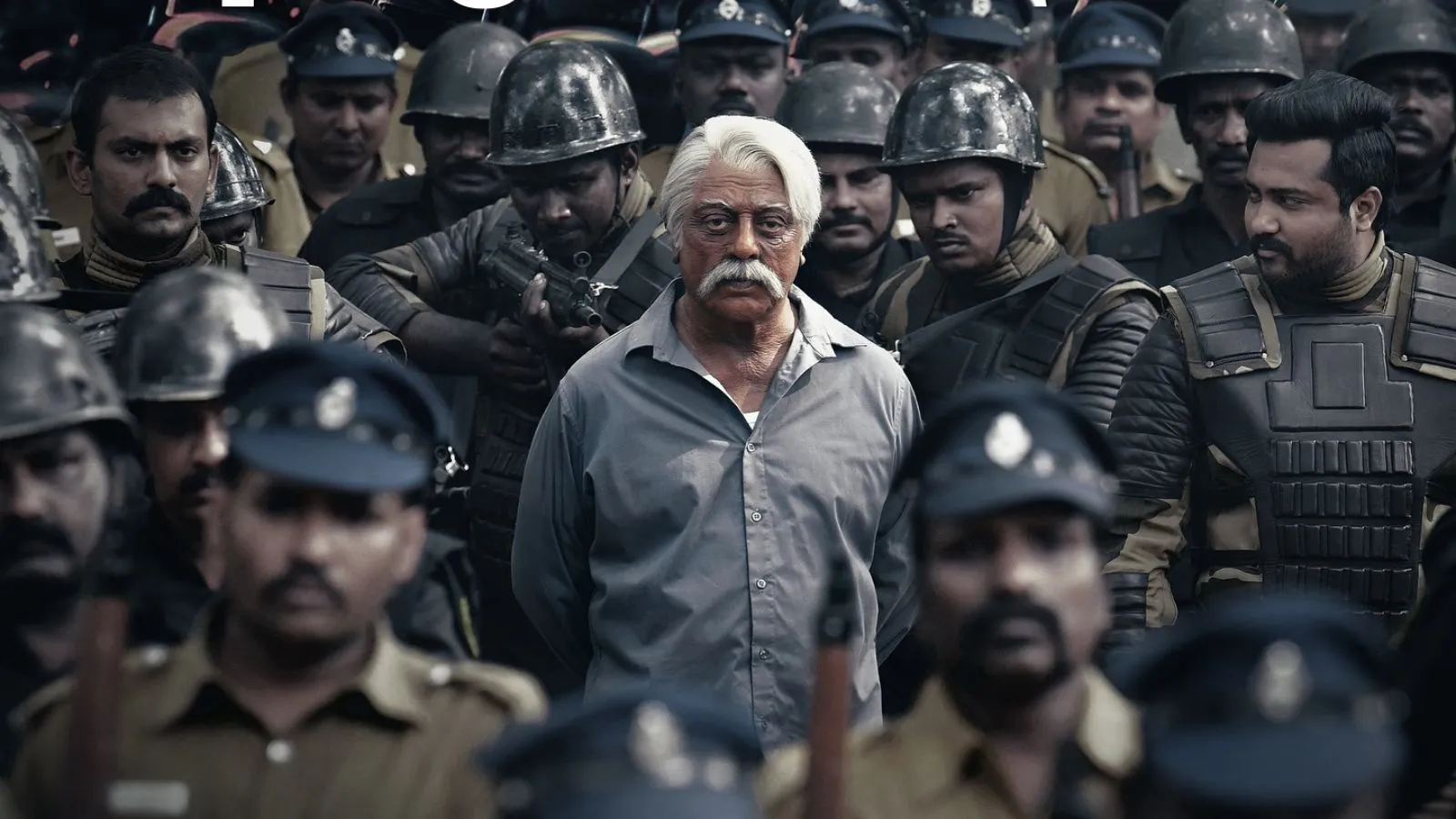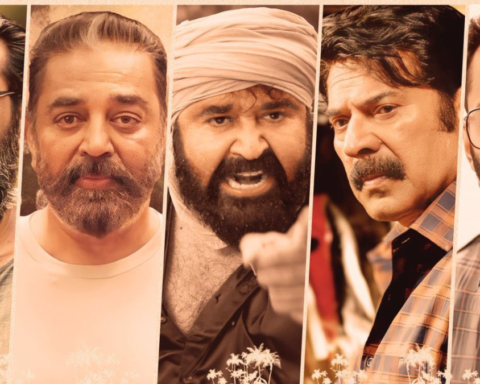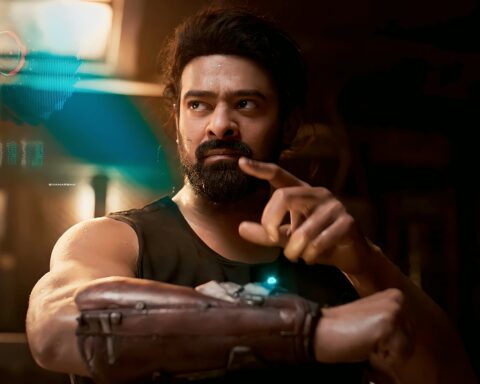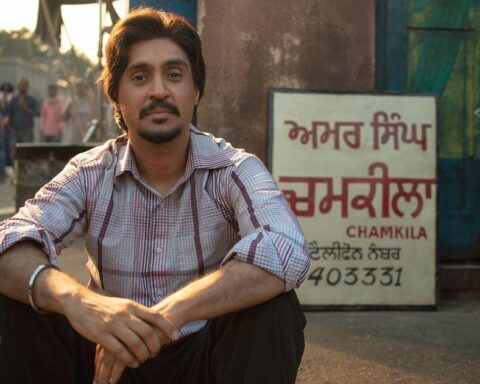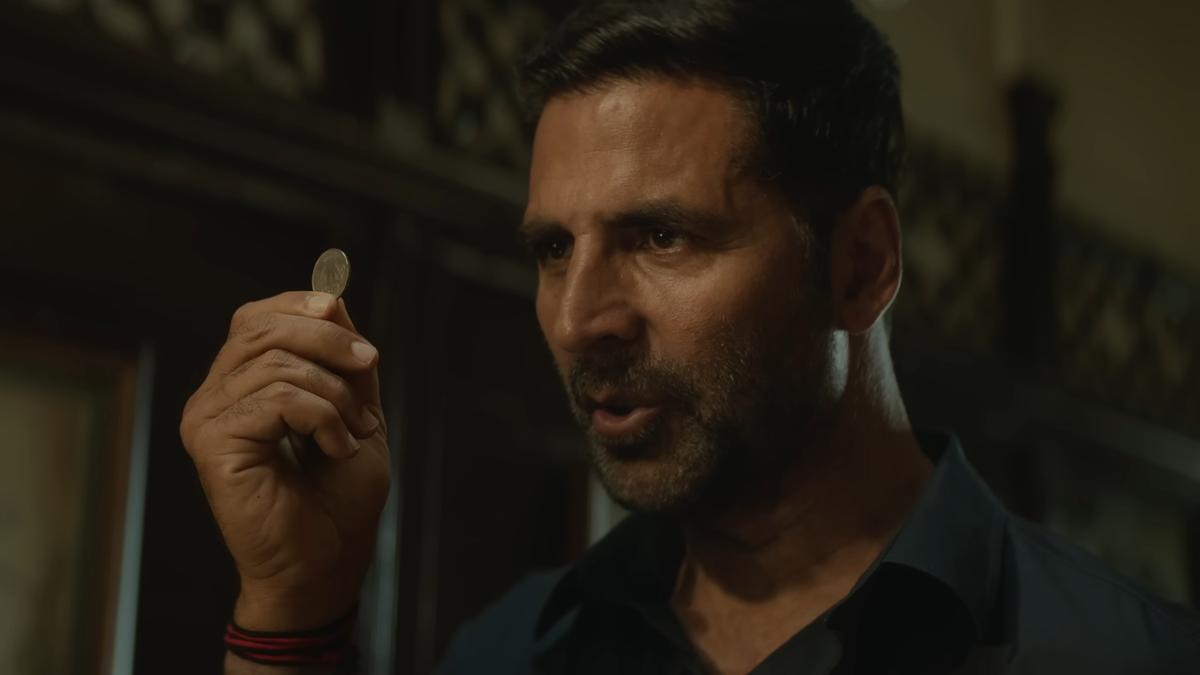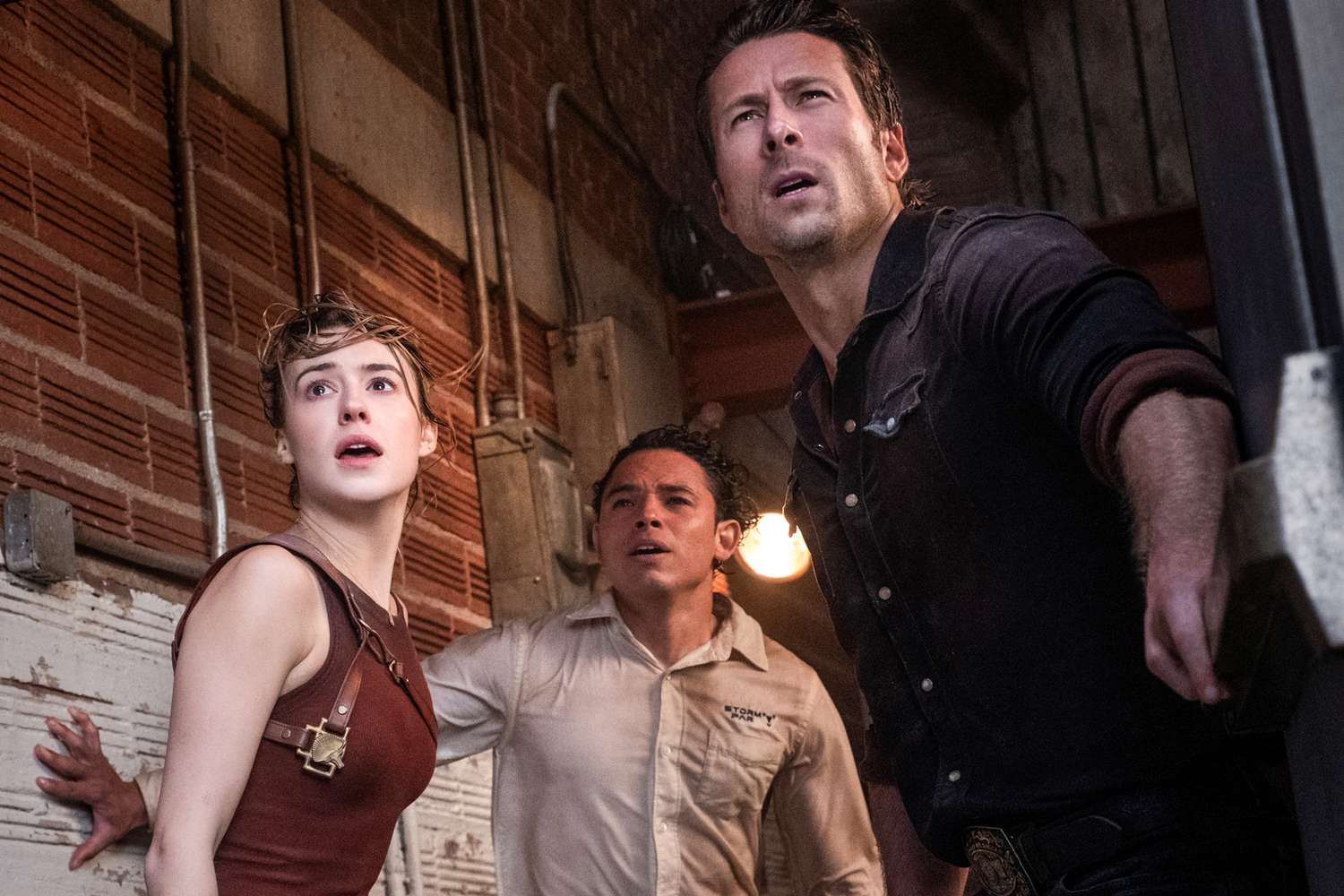Shankar’s Indian 2, the sequel to his Indian (1996), is also a vigilante film like its predecessor, where the centenarian protagonist, Senapati (Kamal Haasan), aka Indian, gives a clarion call to the youngsters to take on the onus to clean up the corruption in the country. Though the veteran freedom fighter has aged, he still has the vigor and acumen to punish the enemies of the nation, utilizing the traditional art of Varma Kalai as his lethal weapon. Unlike the prequel, where the culprits who have risen to power and the zenith of corruption by abusing their position and power, are only limited to the territory of Tamil Nadu. Senapati travels to various corners of India to ensure that criminals are punished for their wrongdoings. The idea is grand, and the action sequences go hand in hand to fulfill the vision and ambition of the filmmaker. ??Unfortunately, a lack of a coherent narrative arc does not allow the film to develop any meaningful depth. As a result, it lacks the strong emotional engagement required to leave a lasting impression. Clocking around three hours ultimately renders the entire viewing experience into a disappointingly unfulfilled fare. ?
Chitra Aravindhan (Siddharth), a young and ambitious man accompanied by his three friends, Aarthi (Priya Bhavani Shankar), Thambesh (Jagan), and Harish (Rishikanth), runs the YouTube channel Barking Dogs. The aim is to raise awareness among the public by creating a skit of political satire with RK Narayan’s common man as an animated figure. Over the period, the channel has gained popularity amongst people in Tamil Nadu. Aravindhan’s father, Varadharajan (Samuthirakani), is an honest Anti-Corruption and Vigilance Commission officer, and his mother, Chitra (Kalyani Natarajan) is a homemaker. It is a happy family of three. In one of their missions to expose corruption, Aravindhan comes across an incident where a young woman jumps from a building after being falsely accused of submitting fake documents to acquire the post of teacher. Along with his team, he stages a protest and gets arrested and put behind bars. They are bailed out by his girlfriend, Disha (Rakul Preet Singh), who reprimands him for his actions. She informs him that, despite his efforts, nothing is going to change in the country. In a fit of rage, Aravindhan starts a campaign to bring Senapati back and help wipe corruption out of the nation once again. Senapati, now residing in Taipei and running a martial arts school, reciprocates and returns to India. Within a few moments of his return, CBI officer Pramod (Bobby Simha), son of police officer Krishnaswam (Nedumudi Venu), from the prequel, arrests him, but he escapes and resumes his violent crusade.
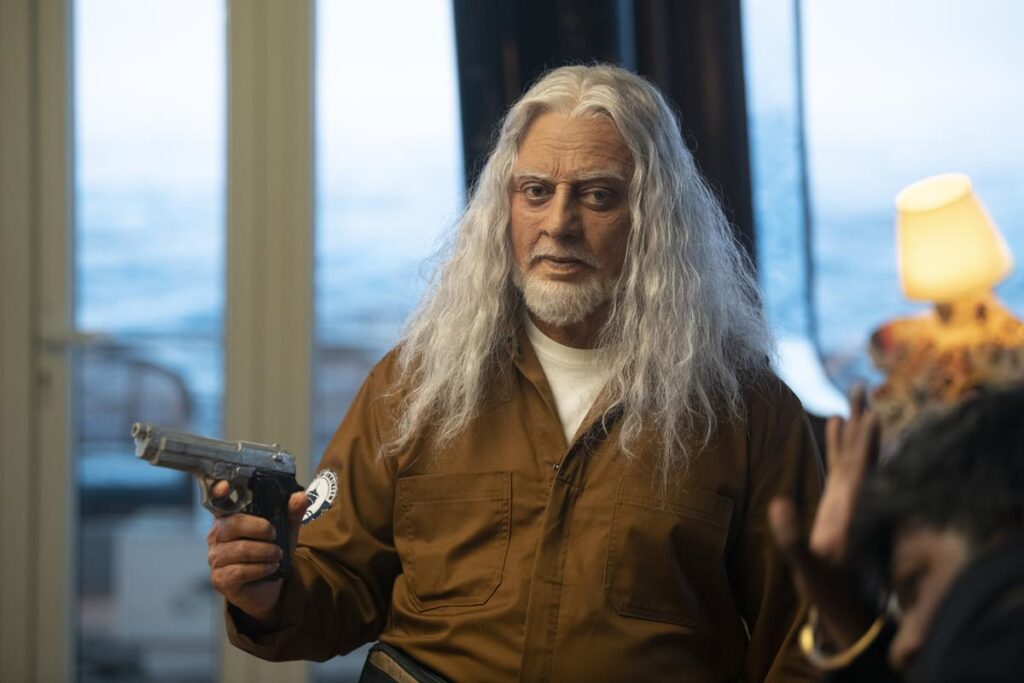
Most of Shankar’s films have dealt with socially relevant subjects that he carefully spices up with a magnificence that has always targeted delivering wholesome masala entertainment for the masses. In his fourteenth venture as a director, he follows the same rules that he has established for himself since his three-decade-long career as one of the most successful filmmakers in India. Indian 2 underlines the fact that, at present, youngsters have the power to bring political changes to the nation. As charity begins at home, one should first identify if someone from their family has been associated with corrupt activities. But to bring such changes to society, one should be ready to pay a big price, and the young characters in the film also have to make sacrifices that challenge their beliefs and values. Moreover, social media can also be used as a tool to implement changes in the population as well as tarnish one’s reputation. The film had all the promises of being gripping but failed to fully capitalize on the potential of these themes. It struggles to balance the efforts taken by Aarthi, Thambesh, Harish, and Aravindhan to expose the misdeeds of their parents and the killing spree of Senapati, resulting in a somewhat disjointed narrative. Shankar knows the skill to engage the viewers in his films with emotional moments that connect to his mainstream viewers, and the film has a few of them. Aravindhan’s using his mother’s maiden name and his becoming the reason for the discord in his family, Disha confronting her family regarding the professional efficiency of his brother, and Aarthi being castigated by her mother for an honest act are some of the moments that resonate with and connect to the story. But not every idea lands. As Senapati hunts his prey, which includes a businessman who owes loans to Indian banks, a wealthy and vile granite contractor, and a recruitment scammer, he gets into a spiel explaining the reason behind their unexpected deaths. It gives us the feeling that the act is driven more by sadistic pleasure than a desire to deliver justice. The public shifting their opinion about Senapati and considering him from a savior to an enemy is quite random and happens so instantly that it does not feel like a forced plot point. Hence, the film does not find a way to absorb the viewers, instead relapsing into a stolid, almost joyless determination.
Songs and dance sequences have always been a highlight in Shankar’s films, but disappointingly, he doesn’t deliver any such moments here. The soundtrack, Calender Girl, is unimpressive and tedious. Even the presence of Miss Universe Demi-Leigh Tebow could not save it from sinking into a monotonous extravaganza. Kadharalz looks like an intrusion that does not do anything to heighten the exhaustion of the viewing experience. Even the background amps up the energy in certain places, but it does not have the fervor of the original film. In some of the scenes, the background scores of the AR Rahman have been used, and it raises the notch of those scenes to a different level. The music of the film comes as a major disappointment from a caliber like Anirudh Ravichander, whose previous collaboration with Kamal Hassan in Vikram (2022) featured such stupendous scores.
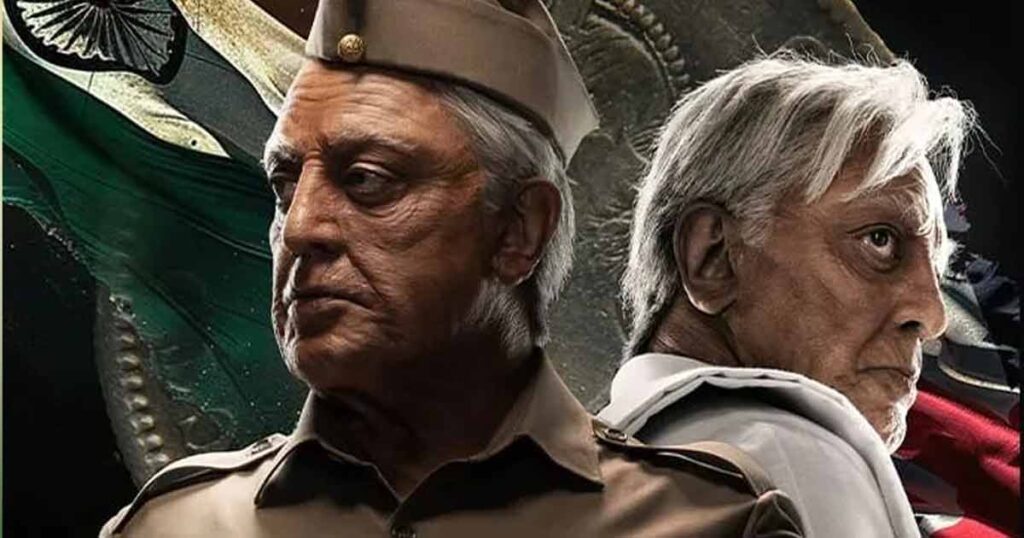
The cinematography by Ravi Varman brings fluid movements and well-composed shots that immerse us in the throbbing energy of the film, but it lacks anything extraordinarily impressive for a film of such scale. A. Sreekar Prasad’s editing maintains the tempo and rhythm of the film consistently, yet it struggles to overcome the drag caused by a lackluster storyline. Muthuraj’s production designs maintain a balance between the subtle texture of middle-class residences and the opulent interiors of businessmen, showcasing an adept understanding of both socioeconomic contrasts. The action sequence designed by Ramazan Bulut and Grant Hulley has a visceral energy that keeps us glued to the screen. However, the chase in the final moments of the film seemed to have overstayed its welcome. Despite significant flaws or problems in the film, Kamal Haasan’s performance demonstrates that a skilled actor can enhance and elevate the quality of the material, even if the script itself is only average. His charisma and talent contribute significantly to making some parts of the film enjoyable. He once again humanizes Senapati as a character worthy of his talent. Siddharth meets the varied demands of his role as Chitra Aravindhan with sensitivity. Samuthirakani as Varadharajan brings a strong and effective portrayal of an individual caught up between his modus operandi and responsibility towards his family. Priya Bhavani Shankar, Rishikanth, and Jagan, as friends of Aravindhan and responsible citizens, do a commendable job. Rakul Preet Singh and Bobby Simha are very thinly sketched characters.
Indian 2 is a polished production that delivers lofty ideals and thrilling stunts, but nothing more. It lacks the novelty of its prequel and raises the question of whether a sequel was even needed in the first place. As it ends, we are informed in a trailer-like snippet that another part of the film will hit the screens next. I hope that Indian 3 rekindles the lost excitement and revitalizes the franchise with fresh creativity.
